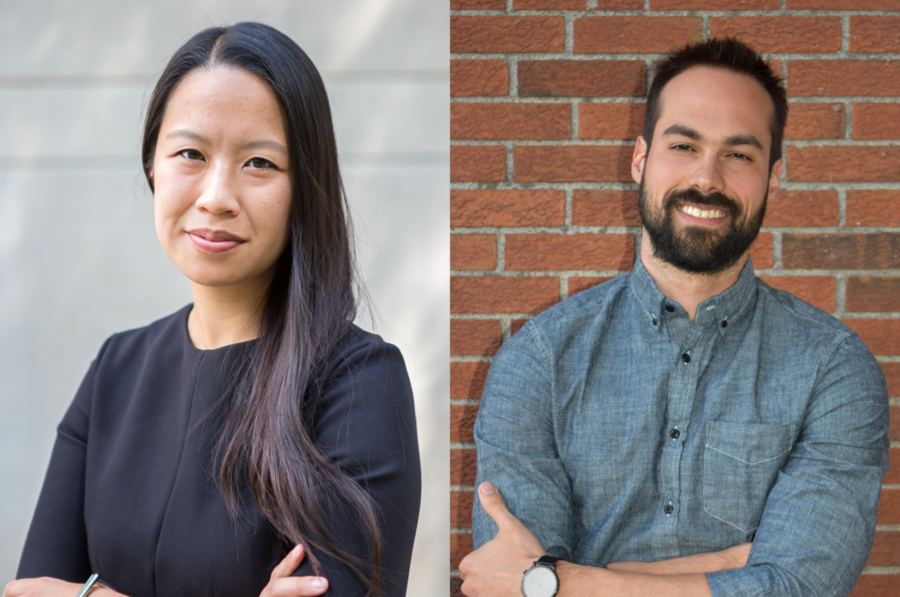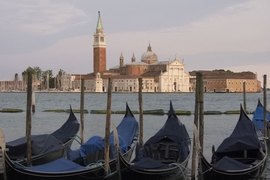Four years ago, a team of graduate students at MIT’s School of Architecture and Planning helped curator and associate professor of architecture Ana Miljacki research, plan, and mount the United States’ pavilion at the 2014 Venice Architecture Biennale. The exhibition, titled “OfficeUS,” took a comprehensive look at America’s influence in the world over the past 100 years through its architectural work abroad.
This year, two of those students — now alumni — are returning to Venice as curators of their national pavilions for the 2018 Biennale, open to the public from May 26 to Nov. 25. “It is an unexpected honor and opportunity to co-curate the U.S. Pavilion at this year’s Biennale, at this point in my career,” says Ann Lui SMArchS ’15, an assistant professor at The School of the Art Institute of Chicago who was named co-curator of “Dimensions of Citizenship,” the exhibition that will represent the United States in Venice.
“The call for proposals for the U.S. Pavilion was issued shortly after the inauguration of a new administration that raised urgent and troubling questions, including ones about citizenship today. I felt that architecture needed to be part of that conversation. It was a longshot. But I believe our proposal spoke to this contemporary moment.”
The Biennale has long been a personal goal for Gabriel Kozlowski SM ’15, selected last November to co-curate the Brazil Pavilion. “The year I joined this school was also the year that Rem Koolhaas was curating the Biennale, so I came to MIT knowing that I wanted to get to Venice,” says Kozlowski. A native of Rio de Janiero, Brazil, he holds a master’s degree in urbanism and is currently a teaching fellow in the Department of Architecture and a research associate at the Leventhal Center for Advanced Urbanism.
“When I arrived at MIT, I discovered that a professor was curating the U.S. pavilion, offering a course where students would help develop the support materials for that exhibit,” he says. “I learned how to understand an exhibition as a means to elaborate on specific concepts and present them in innovative ways, and to how to plan and coordinate all the production involved in a large event like this without losing sight of the broader picture. Now, just four years later, I’m in the position Ana was in. And I hope to be able offer to my younger colleagues and collaborators what she once offered me.”
Both Lui and Kozlowski’s 2018 Biennale projects engage with global questions that extend far beyond traditional design and planning. Lui’s “Dimensions of Citizenship” will examine the concept of citizenship across a variety of scales, ranging from the cosmos to the human body. Each of its seven elements offers a detailed look into a global issue such as climate change, migration, sovereignty, or the future of the nation-state through a specific case study. “We intend to ask two questions,” says Lui. “What does it mean to be a citizen today? And what is the role of architecture to help research, understand, and render visible these questions of what it means to belong?”
Kozlowski’s project, titled “Muros de Ar” (Walls of Air), explores ways to visualize and understand walls — both concrete and conceptual — that have constructed the Brazilian territory and its society, in relation to the broader context. Moving from global scale to that of the architectural object, the pavilion will feature mappings of Brazil’s human and material flows (immigration/emigration patterns and the movement of commodities across the country), the relation between artificial and natural ecosystems, the implications of Brazil’s political borders, the geography of the country’s real estate market, and the physical limits within its cities. The exhibit promises to be austere; Kozlowski and his three co-curators have chosen to eschew the ubiquitous 3-D renderings, photos, videos, and animations, electing instead to articulate their vision exclusively in line drawings and maps.
Lui and Kozlowski’s project represent a sizeable shift in how architecture presents itself, both to the profession and to the world at large. Lui, who had Miljacki as her thesis advisor at MIT, believes that shift began in part in 2014 with “OfficeUS.” “Ana and her co-curators presented architecture in an unprecedented way, as a discipline of active research, both historical and in the production of the resident exhibitors,” says Lui, who along with her teaching job is co-founder of Future Firm, a Chicago-based architecture firm. “She and the team showed me — and everyone who saw the 2014 exhibit — that history is an ongoing act of construction. I learned that historical research can also be a practice, just like the practice of design.”
The selections of Lui and Kozlowski come as no surprise to their former mentor and current colleague. Yet she is reluctant to take any credit. “Perhaps the experience of working on a project as big in scale as our 2014 exhibit prepared them for their current roles,” says Miljacki, whose own research interest include architecture in Cold War Eastern Europe and the politics of contemporary architectural production. “But even then, they were incredibly competent colleagues, people I could turn to with a problem and know they would find a solution. And they were both great architectural thinkers, each in their own way. They’re just amazing.”







